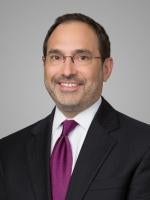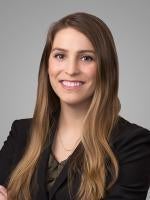The year 2017 brought the enactment of several significant state and local paid family and medical leave laws. These new laws do not always align with the federal Family and Medical Leave Act (“FMLA”) or a company’s existing policies—even if the company’s existing policies are more generous than the FMLA. Employers operating in the jurisdictions below must be sure that their policies and practices comply with the following upcoming laws, and employers everywhere will need to be on the lookout for other states and municipalities following suit.
New York State Paid Family Leave
Effective January 1, 2018, employees working in New York State will be eligible to receive job-protected, paid family leave under the New York Paid Family Leave Benefits Law (“NY PFL”) (i) to provide care to a newborn or a newly placed child for adoption or foster care, (ii) to care for a family member with a serious health condition, or (iii) due to an exigency relating to a family member being deployed abroad. Under the NY PFL, an employee may, in a 12-month period, take leave of up to eight workweeks in 2018, increasing to 12 workweeks beginning on January 1, 2021. Benefits received under the NY PFL begin at 50 percent of the employee’s pay, up to 50 percent of the state average weekly wage (increasing to 55 percent, 60 percent, and 67 percent, respectively, on January 1 of the following three years).
The NY PFL is intended to be funded through employee payroll contributions. Employee eligibility for NY PFL benefits and leave begins after 26 consecutive weeks (for employees whose regular employment schedule is 20 or more hours per week) or 175 days (for employees whose regular employment schedule is less than 20 hours per week) of employment. Notably, the definition of “family member” under the NY PFL is significantly broader than under the FMLA. In addition, maternity leave under the NY PFL does not begin until after pregnancy disability ends, thus extending the leave beyond 12 weeks in most cases, including for employers not covered by the FMLA.
The San Francisco Paid Parental Leave Ordinance
Effective January 1, 2017, the city of San Francisco began to phase in its new Paid Parental Leave Ordinance (“PPLO”), with the final phase becoming effective on January 1, 2018. The PPLO requires that San Francisco employers pay the difference (“Supplemental Compensation”) between benefits received under California’s Paid Family Leave (“CA PFL”) insurance program and an employee’s full pay (to a cap) for a period of six weeks. This law applies only to leave taken to bond with a newborn or a newly placed child for adoption or foster care. To qualify for Supplemental Compensation, employees must (i) have been employed at least 90 days prior to starting leave, (ii) be eligible to receive CA PFL benefits, (iii) perform at least eight hours of work per week for the employer within the city of San Francisco, and (iv) work at least 40 percent of their total weekly hours for the employer within the city of San Francisco.
The California Family Rights Act
As a part of a slew of 2017 legislative changes to California employment laws, the California Family Rights Act (“CFRA”) has been amended to expand the parental bonding leave protections to California employers with only 20-49 employees within 75 miles of the worksite, beginning January 1, 2018. The CFRA’s other eligibility requirements will remain intact: the employee must work at least 12 months with the employer and have worked 1,250 hours during the previous 12-month period. This expansion of the CFRA to smaller employers does not extend to other types of job-protected leave under the law, including leave for an employee’s own serious health condition or to care for the employee’s parent or spouse who has a serious health condition.
Washington State Paid Family and Medical Leave
In 2017, Washington State enacted a comprehensive Paid Family and Medical Leave Law (“WA PFML”), which will create an insurance program to provide income replacement benefits for family and medical leaves. Eligible employees may begin to receive benefits and take leave beginning on January 1, 2020; however, payroll deductions to fund this insurance may begin as early as January 1, 2019. The WA PFML provides for up to 90 percent of an employee's income for as much as 18 weeks of protected leave in a year. Like the federal FMLA, the WA PFML applies to employees who have been employed for at least 12 months and have worked for at least 1,250 hours in the previous 12-month period. The WA PFML applies to employers with 50 or more employees (without regard to the number of employees at a single worksite).
The District of Columbia Universal Paid Leave Amendment Act
In 2017, the District of Columbia enacted the Universal Paid Leave Amendment Act (“D.C. UPL”). Beginning January 1, 2020, the law will provide D.C. employees up to a combined 16 weeks of (i) paid family leave (up to six weeks), (ii) medical leave (up to two weeks), and (iii) parental leave (up to eight weeks) in a 52-workweek period. The D.C. UPL provides income replacement while on leave but does not provide job-protected leave—such leave is only job-protected to the extent employees are also eligible for leave under the existing D.C. Family and Medical Leave Act, which provides up to 16 weeks of unpaid job-protected leave every two years. Nearly all employees in the District of Columbia will be eligible for paid benefits under the D.C. UPL, so long as more than 50 percent of the employee’s hours worked for the employer are in the District of Columbia. The D.C. UPL will be funded by payroll taxes, and deductions may begin July 1, 2019.





 />i
/>i


